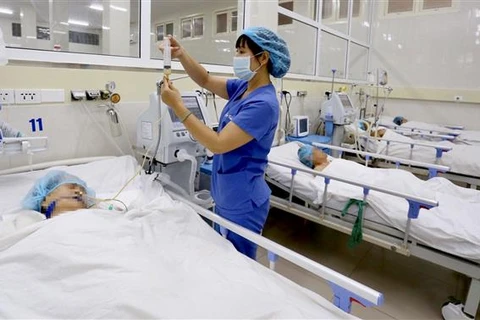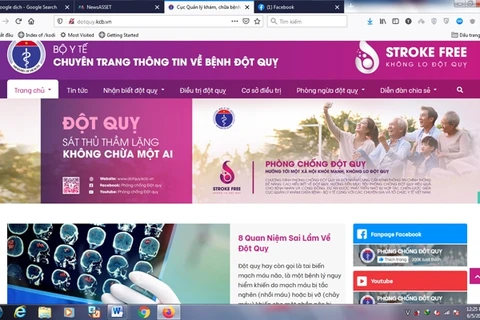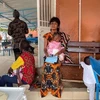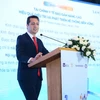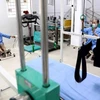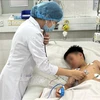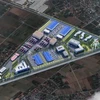 Tran Quang Hien, Director of the An Giang Department of Health (left), presented the Golden Status Award from the World Stroke Organisation to the An Giang Cardiovascular Hospital. (Photo: VNA)
Tran Quang Hien, Director of the An Giang Department of Health (left), presented the Golden Status Award from the World Stroke Organisation to the An Giang Cardiovascular Hospital. (Photo: VNA)Hanoi (VNA) – An Giang Cardiovascular Hospital in the Mekong Delta province of the same name on August 27 was presented the Golden Status Award by the World Stroke Organisation (WSO) for its achievements in the treatment of stroke.
This is the first medical facility in the Mekong Delta region certified by the WSO to receive such an award.
The award will help the hospital's stroke unit to improve quality in serving patients and treating strokes. According to the WSO’s standards, besides early treatment during the "golden time", preventive measures against reoccurring strokes must also be taken.
In October 2018, the An Giang Cardiovascular Hospital started using intravenous thrombolysis for treatment of patients with acute strokes, ensuring that patients with acute ischemic strokes are treated urgently and minimise multiple sequelae for the patients.
Doctor Bui Huu Minh Tri, the hospital’s director, said every year, the hospital receives and treats about 800 stroke patients who are given emergency care through the "red stroke alarm process" at the hospital. This is a procedure developed by the hospital to ensure that stroke patients are examined, tested, have brain CT scans and treated as soon as possible within 3 hours to 4.5 hours since they have symptoms.
Speaking at the ceremony, Tran Quang Hien, Director of the An Giang Department of Health, congratulated the medical team of the An Giang Cardiovascular Hospital for raising the level of medical care of the province and shortening the time for diagnosis and treatment to save lives of stroke patients. Thus, it helps to contribute to providing better care for people of An Giang and the Mekong Delta region.
In the coming time, the hospital will coordinate with medical facilities in the province to conduct remote consultations, early detect strokes, and improve professional skills. It also strives to win the Platinum Status Award from the WSO./.
